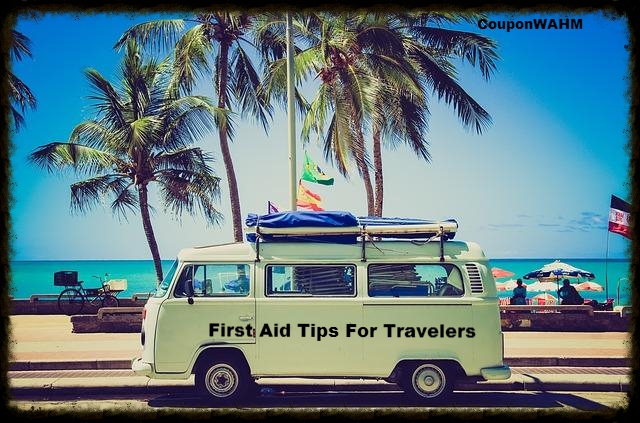
What if you get hurt on your vacation? Or worse, what if your child is hurt? Knowing a bit of emergency first aid can definitely calm the situation while keeping you safe.
Everyone wants to have a safe trip when they travel on vacation. But, accidents do happen. The best thing you can do is not to worry but be prepared all the same. An ounce of prevention is worth a pound of cure, they say. Use that as your motto and let’s get started.
First Aid Kit
The first step is to have a first aid kit with you when you travel. Sure, planes and other transportation are required to have one, but there is nothing like carrying your own. And, you may not need to raise the alarm to take care of the problem. Besides, you don’t want to have to spend time and money trying to find a pharmacy for items that you can carry with you. On the airplane, you can check your first aid supplies in your luggage for safe keeping.
Any store like Wal-Mart or Target will sell first aid kits. You can use this as your basic and add items to it that you need. Most contain way more bandages than anyone would need on a trip (unless they were accident prone). Remove some of them to make room for things like aspirin, small water bottle, thermometer, cotton balls, antibiotic ointment, antihistamines, hand sanitizer and emergency rations (granola bars for energy). Don’t forget to account for the fact that you are traveling with kids. Child doses of medications also need to be included in the kit.
You can also create your own first aid kit. If you plan on a lot of outdoor activities while on your trip, it might be best to include wildlife first aid items in your kit as well. Some to remember: sunscreen, bandana, tourniquet, safety pins, sewing kit, utility knife gadget, flashlight and batteries, matches, snake bite kit and other medicines. These things can help you out of a sticky situation when having fun outdoors. Even if you never need it, you will be prepared.
Don’t forget to carry your first aid kit during your excursions. Even one you create yourself can be carried in a case that will fit easily in a backpack.
Practicing First Aid
Anybody can take a first aid course. You can find them online and at your local community college or health facility. Even knowing the basic life-saving techniques can mean the difference between a minor and serious injury. Some of the skills that would be helpful include CPR (cardiopulmonary resuscitation), the Heimlich maneuver (for choking), infant and toddler life-saving, field life-saving skills, and bandaging.
The main thing to be aware of is how to prevent accidents that can lead to the need for emergency first aid. Wear appropriate clothing and shoes for travel. Stay hydrated in hot weather. Avoid rushing anywhere during your trip. That is when accidents can occur.
